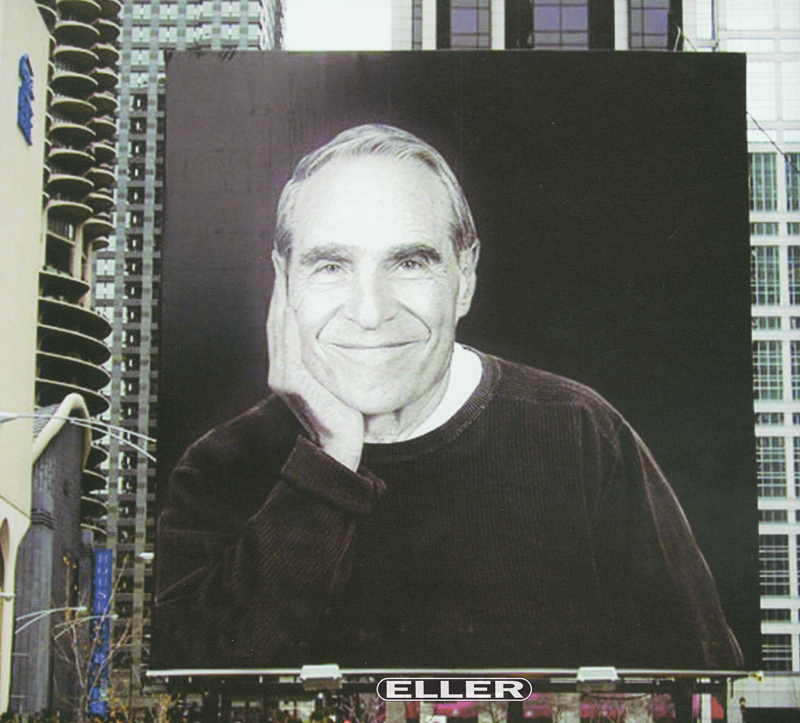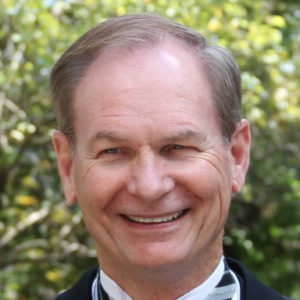
A Tribute To Out Of Home Legend Karl Eller: 1928-2019
March 11, 2019 by guest author, sixteenninewpadmin
Guest Post: Alan High, ARH Digital Solutions
Arizona businessman Karl Eller, the founder of what became the largest outdoor media company in North America, passed away Sunday at his Phoenix home. He was 90. OOH media veteran Alan High, a Canadian now based in NYC, wrote this tribute:

Alan High
The first time I met Karl Eller was in the summer of 1998. My business partner and I, John Jory, had been managing the Canadian subsidiary of a British Out of Home company, More Group, for about five months. Clear Channel had recently purchased More Group and the decision was made to transfer the division over to the US. We were meeting Karl (our new boss) at Toronto airport’s private jet terminal for a 10 AM arrival. Karl was flying in from Phoenix.
When he stepped out of the plane, he was wearing a purple suit, purple tie and yes, purple shoes. He extended his hand to both John and I, and said, nonchalantly, “How you boys doing?”
As we began talking, it dawned on me that Karl must have left Phoenix somewhere around 3-3:30 AM his time, to arrive at 10 AM EST. I mentioned this and he said that he did that all the time. He used the corporate jet quite a bit to get around the country, visiting the outdoor markets as often as he could.
The jet, he said, allowed him to save time versus commercial travel. He kept a number of suits on the plane and would arrive early in the morning at the airport – sometimes in his pajamas- and then sleep on the plane, changing into a business suit when he got close to his location.
We spent the rest of the day showing Karl our – or should I say Clear Channel’s – Canadian assets, which consisted primarily of the advertising concession at Pearson airport that we had won just a few months earlier. Karl had bought a standalone airport advertising business called TMI, before he was acquired by Clear Channel, and he was running it as a separate division under the Clear Channel umbrella.
Karl requested that we work closely with TMI, but John and I had concerns with this plan. Canada’s business was completely different from the US and we saw few synergies. We were concerned that some of the innovations we had proposed to win the airport concession would fall on deaf ears through TMI.
Karl suggested we give it a try, and if we ran into any problems, to “call him”.
We did.
After about four weeks, it became apparent that TMI was not going to support our plan to transform the advertising concession, so Karl got the call.
He listened closely to our ideas and asked a lot of questions. We wanted to change the entire concession from the traditional horizontal 40” x 50” sign to a vertical Transit Shelter 4’ x 6’. We argued that the width was identical (so it wouldn’t take up any more wall space) but the larger sign would create significantly more impact for advertisers. He expressed concerns about moving away from the accepted industry size – which we acknowledged was a risk – but Toronto’s airport touched close to 40% of Canada’s air traffic, and we argued the rest of the country would adopt our format and we were convinced it would became popular with advertisers.
We also wanted to introduce scrolling signs – the forerunner of digital signs – but TMI felt the technology was unreliable and broke down regularly. TMI felt advertisers would be unhappy if their ads were impacted and they would not be willing to share the space on a scrolling unit (sound familiar?).
We finally won Karl over when we reviewed our revenues, and told him that we were so confident in the incremental revenue that would be generated from these signs that we would hire a full-time technician to do nothing but provide ongoing service.
About a week later, we got the call from Karl. He gave us the green light to proceed, but made it clear to us that TMI were not on board. “Here’s your shot to prove you’re right, and I’ll support you as long as you deliver.”
John and I realized Karl was taking a big risk with two guys he hardly knew, but we were very appreciative that he felt our business plan was solid enough that he’d back us up.
Over the next 12 months, sales easily exceeded our original forecasts, and we kept the scrolling signs operating with virtually no down time.
When we requested capital to install the first four-color LED in an airport in North America, Karl gave us the go-ahead. When we proposed to purchase 10 Spectacular signs on the Gardiner Expressway, it was a five minute call to review our projections and we got the OK at the end of the call.
Once we had proven ourselves, Karl went out of his way to fast-track our projects. He made an analogy about race horses and thoroughbreds, and we got it.
Karl was instrumental in opening new doors. He helped engineer our entry into the shopping mall business with Cadillac Fairview and the Ellman Company (Ellman is now Branded Cities – who recently acquired the remainder of Clear Channel Canada that they didn’t own). He was a big advocate of Dundas Square – Canada’s Times Square equivalent – where Branded Cities is now the dominant competitor. His comment to John and I was “keep delivering and I’ll keep supporting you.”
The two-year period that Karl was involved in the Canadian business resulted in the introduction of the vast majority of the business assets Branded Cities manages today. He was unwavering in his support of our efforts. He was our coach and referee, never afraid to jump in and help us get things done.
He was a man of his word and he always backed up those words with actions. Integrity was something he lived by and defined who he was. We can all profit by how Karl conducted himself in life. My only issue with Karl … his wardrobe needed some work.
The OOH industry owes Eller an immense debt of gratitude for his vision and leadership.
Karl, you will be missed.



Leave a comment